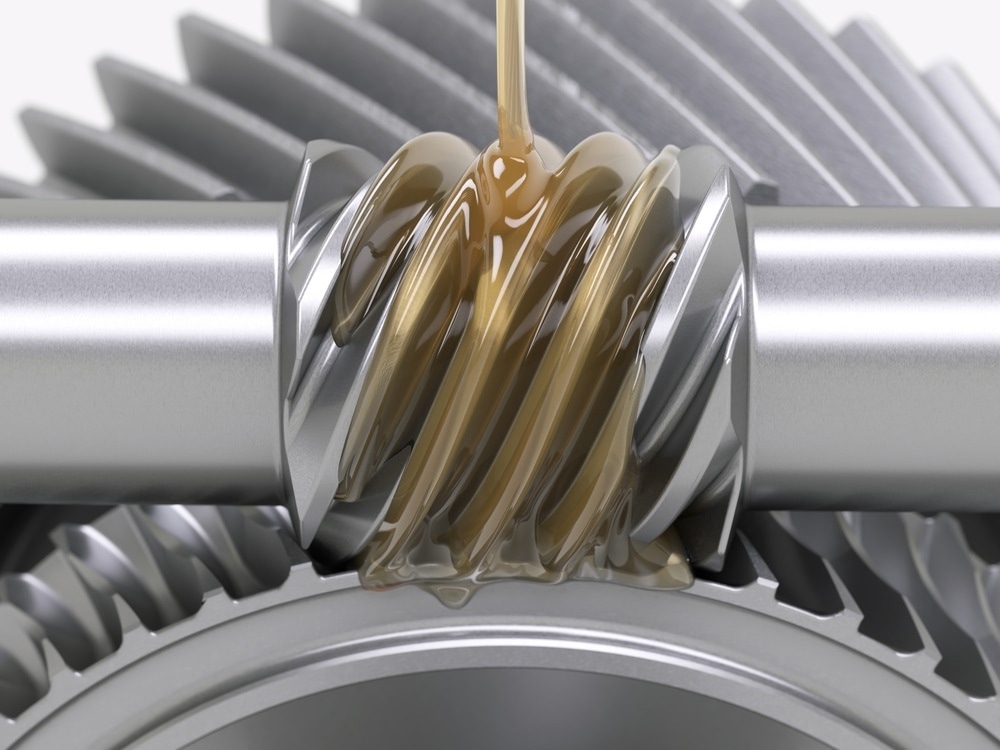Despite the significant drop in crude oil price over the past two years, long-term predictions indicate that it will reach approximately US$50 – 70/bbl, a price that will still encourage the utilization of existing oilfields instead of tapping new reservoirs. Consequently, chemically enhanced oil recovery (EOR) is predicted to increase in the near future, which will drive the need to develop fluids that give optimal performance. This objective can be realized through detailed rheological characterization.

Image Credits: maxuser/shutterstock.com
This article reviews the work performed by TU Clausthal to develop a better understanding of EOR mechanisms by polymer flooding and also the significance of fluid rheology.
After primary and secondary recovery, chemical EOR technology can extract 20% of additional oil from a reservoir. Polymer flooding is an established chemical EOR process, where an aqueous polymeric solution with a viscosity closely matched to the oil is injected to enhance the mobility of fluid in the reservoir.
The fluid injection profile is improved through the addition of polymers, making it more consistent and stable, enhancing the displacement efficiency. The performance of the polymeric solutions used largely relies on their rheological properties and therefore, detailed rheological characterization under relevant conditions supports performance optimization.
Both synthetic polymers and biopolymers are suitable for EOR, with the former often preferred due to cost, salinity, and temperature tolerance. The selected polymers are likely to have high molecular weight with a good viscosifying power, which is important for economic use.
Solutions are usually highly concentrated and consequently exhibit viscoelasticity and non-Newtonian shear rate dependent viscosity. As polymers have a high molecular weight, they can also create huge extensional stresses along the flow axis, as the fluid penetrates the pores through narrow connecting channels.
A better understanding of the polymers’ flow behavior and their interactions with the pore geometry of a particular reservoir is imperative to prevent excessive polymer loss and pore blocking, to achieve beneficial economic and technical performance.
Complementary measurement techniques are required to investigate the complex flow behavior and interactions between porous media and polymer solutions, with rotational rheometry serving as a primary tool. Using rotational rheometry, bulk shear viscosity can be measured as a function of shear rate in order to define the fluid’s non-Newtonian viscosity profile. The linear viscoelastic behavior can also be investigated through small amplitude oscillatory testing.
To measure shear viscosity on a rotational rheometer the shear stress is determined at one or more shear rates, however, it is possible to simultaneously determine normal stresses by measuring the force acting normal to the plane of applied shear. Normal stresses can give a better understanding of a polymer’s flow induced (non-linear) elastic response.
Complementary rheological methods are as follows:
- Microfluidic techniques for investigating high shear and extensional behavior
- Microrheology by dynamic light scattering for studying viscoelastic properties on short timescales
- Micromodels for microvisual analysis of EOR fluid flow via representative porous media; glass-silicon-glass (GSG) models provide several benefits
Rheology supports optimization studies as it can help characterize the behavior of EOR fluids in terms of viscoelasticity and response to extensional stress. The latest developments in rheometer design make it easier to perform these investigations and help boost the value of the rheological method for EOR applications.
Applying physical micromodeling and rheology together helps to discriminate the fluid’s inherent features from performance critical behaviors associated with its interaction with the reservoir’s complex pore structure, and provides additional insight that can be leveraged to improve performance.
The rheology can be applied to develop EOR fluids, which provide the economic and technical performance required for current oil extraction environment.

This information has been sourced, reviewed and adapted from materials provided by Malvern Panalytical.
For more information on this source, please visit Malvern Panalytical.